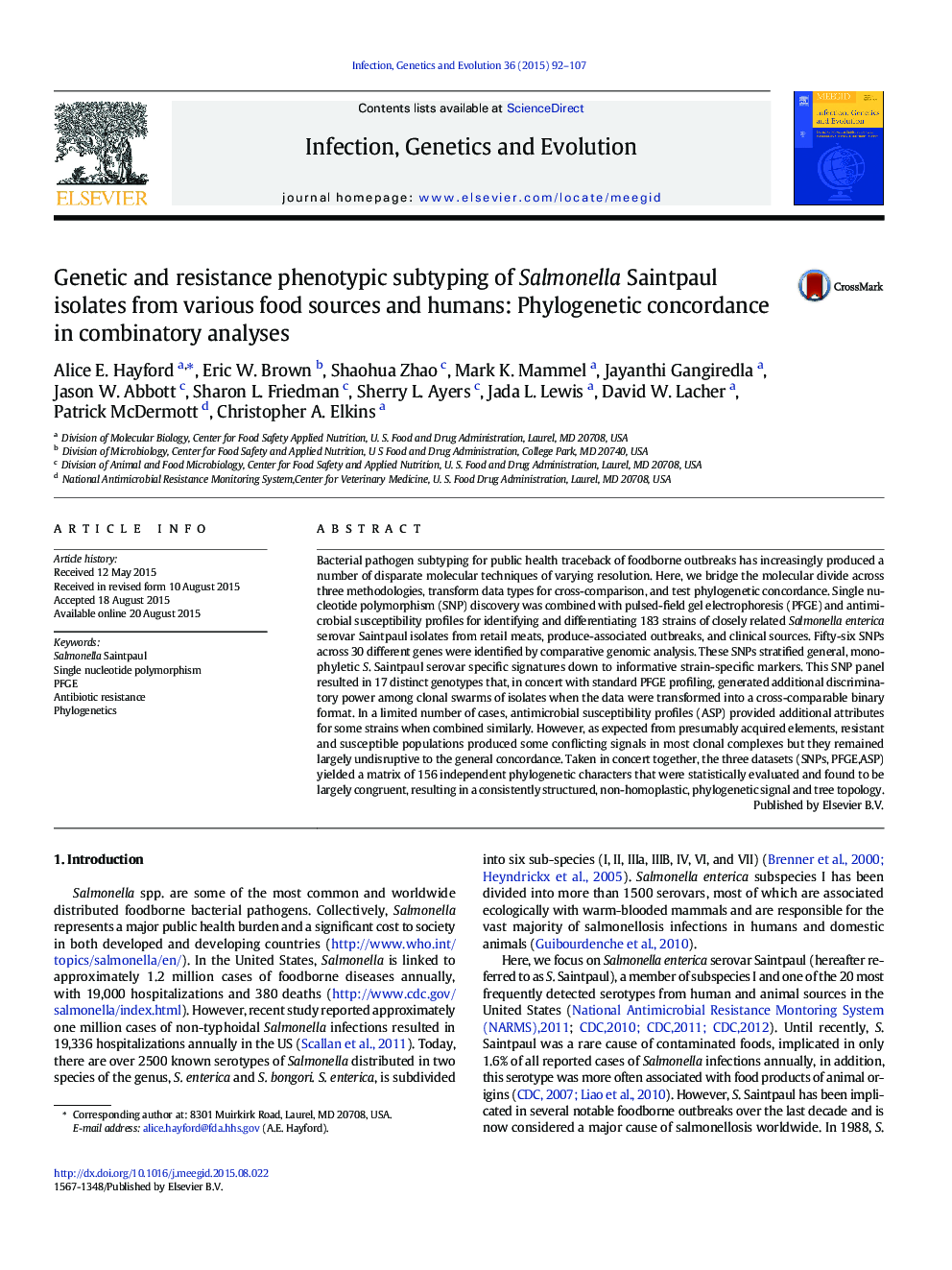| Article ID | Journal | Published Year | Pages | File Type |
|---|---|---|---|---|
| 5908526 | Infection, Genetics and Evolution | 2015 | 16 Pages |
Abstract
Bacterial pathogen subtyping for public health traceback of foodborne outbreaks has increasingly produced a number of disparate molecular techniques of varying resolution. Here, we bridge the molecular divide across three methodologies, transform data types for cross-comparison, and test phylogenetic concordance. Single nucleotide polymorphism (SNP) discovery was combined with pulsed-field gel electrophoresis (PFGE) and antimicrobial susceptibility profiles for identifying and differentiating 183 strains of closely related Salmonella enterica serovar Saintpaul isolates from retail meats, produce-associated outbreaks, and clinical sources. Fifty-six SNPs across 30 different genes were identified by comparative genomic analysis. These SNPs stratified general, monophyletic S. Saintpaul serovar specific signatures down to informative strain-specific markers. This SNP panel resulted in 17 distinct genotypes that, in concert with standard PFGE profiling, generated additional discriminatory power among clonal swarms of isolates when the data were transformed into a cross-comparable binary format. In a limited number of cases, antimicrobial susceptibility profiles (ASP) provided additional attributes for some strains when combined similarly. However, as expected from presumably acquired elements, resistant and susceptible populations produced some conflicting signals in most clonal complexes but they remained largely undisruptive to the general concordance. Taken in concert together, the three datasets (SNPs, PFGE,ASP) yielded a matrix of 156 independent phylogenetic characters that were statistically evaluated and found to be largely congruent, resulting in a consistently structured, non-homoplastic, phylogenetic signal and tree topology.
Related Topics
Life Sciences
Agricultural and Biological Sciences
Ecology, Evolution, Behavior and Systematics
Authors
Alice E. Hayford, Eric W. Brown, Shaohua Zhao, Mark K. Mammel, Jayanthi Gangiredla, Jason W. Abbott, Sharon L. Friedman, Sherry L. Ayers, Jada L. Lewis, David W. Lacher, Patrick McDermott, Christopher A. Elkins,
